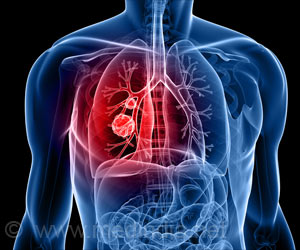Patients with severe COVID-19 are at higher risk of developing ventricular tachycardia and other heart rhythm abnormalities within six months of discharge from the ICU.
- Severe COVID-19 patients requiring mechanical ventilation have a significantly higher risk of developing heart rhythm abnormalities, such as ventricular tachycardia, within six months of ICU discharge
- The risk of developing arrhythmias following COVID-19 is higher than in those without severe infection, although the actual likelihood for each patient is still relatively low
- Hospital systems should be prepared for a potential increase in patients requiring management for new-onset arrhythmias, given the global number of reported COVID-19 cases
Increased Risk of Arrhythmias in COVID-19 Patients Discharged from an ICU
The goal of this study was to look into the long-term risk of arrhythmias after being discharged from an intensive care unit (ICU) for COVID-19 patients who needed mechanical ventilation. The researchers identified all COVID-19 patients treated with mechanical ventilation and discharged alive from an ICU between March 2020 and June 2021 using the Swedish ICU registration. Each patient was matched with up to ten people from the general community based on age, gender, and district of residence. Multiple mandatory national registries were employed to document new arrhythmia diagnoses after ICU discharge.Hospitalization for ventricular tachycardia, atrial fibrillation, other tachyarrhythmias, or bradycardia/pacemaker insertion was the primary outcome. Ventricular tachycardia is a potentially fatal cardiac rhythm disorder that happens when the ventricle beats too quickly to appropriately pump blood, leading the body to get insufficiently oxygenated blood. Atrial fibrillation is characterised by an irregular and rapid heartbeat, which causes shortness of breath and increases the risk of stroke. "Other tachyarrhythmias" are fast heartbeats that are not caused by atrial fibrillation. "Bradycardia or pacemaker implantation" refers to the combination of a slow heart rate and the requirement for a pacemaker as a result of the slow heart rate.
The researchers evaluated the chance of having each arrhythmia in patients with severe COVID-19 to those who did not have severe COVID-19. The analyses were adjusted for risk variables for heart rhythm problems such as age, gender, high blood pressure, diabetes, high blood lipids, chronic renal disease, and socioeconomic status (education level, marital status, and income).
The study comprised 3,023 patients with severe COVID-19 who needed mechanical ventilation in a Swedish ICU and 28,463 people from the general population who had not been in an ICU with COVID-19 and needed mechanical ventilation (control group). The average age of the participants was 62, and 30% were female. “Higher age and male sex are two important risk factors for getting severely sick with COVID-19 and this was reflected in our study participants,” said Dr. Stahlberg.
The average period of follow-up was nine months. The incidence rates per 1,000 person-years of ventricular tachycardia, atrial fibrillation, other tachyarrhythmias, and bradycardia/pacemaker insertion in patients with severe COVID-19 were 15.4, 78.3, 99.3, and 8.5, respectively. In the control group, the corresponding incidence rates were 0.9, 6.0, 6.7, and 0.9, respectively.
Importance of Seeking Medical Attention for Heart-Related Symptoms After COVID-19
Patients with severe COVID-19 who required mechanical breathing had a 16-fold risk of ventricular tachycardia, a 13-fold chance of atrial fibrillation, a 14-fold risk of other tachyarrhythmias, and a 9-fold risk of bradycardia/pacemaker insertion compared to the control group.Dr. Stahlberg said, “COVID-19 patients who need mechanical ventilation often have other conditions and adding a heart rhythm disorder may lead to worsened health. These patients should seek medical attention if they develop palpitations or irregular heartbeats after hospital discharge so they can be evaluated for possible arrhythmias.”
Hospitals Need to Prepare for Potential Increase in Patients with New-Onset Arrhythmias
He concluded, “An increased risk of arrhythmias following COVID-19 has also been reported previously in the bulk of COVID-19 patients not requiring ICU treatment. Together with our new data and taking into account that we globally have 650 million reported COVID-19 cases,3 hospital systems should prepare for an increase in patients requiring management for new-onset arrhythmias.”Source-Medindia














